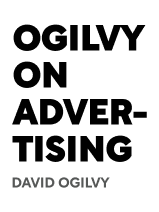

This article is an excerpt from the Shortform book guide to "Ogilvy On Advertising" by David Ogilvy. Shortform has the world's best summaries and analyses of books you should be reading.
Like this article? Sign up for a free trial here .
What is direct response advertising? Is it successful in getting sales and attracting consumers?
Direct response advertising is a type of advertising that explains how ads can create direct reactions to ads. These ads are successful in converting to sales.
Read more about direct response advertising and how it works.
Direct Response Advertising
Now that you know the basics of creating good ads, how can you check if you’ve successfully applied them? And where and when should you display the ads?
To answer all of these questions, consider experimenting with direct response advertising (ads that encourage consumers to contact a company directly to make a purchase) because there’s a clear relationship between advertising and sales—the only factor that affected someone’s decision to buy a product was the ad. (Companies that advertise in multiple media and sell products via wholesalers and retailers don’t know if people are buying their products because the advertising is good, or if it’s for some other reason.)
Experimenting With Variables
Direct response ads allow you to individually test advertising and product variables. The most important variables are positioning, premiums, pricing, terms of payment, and format (for example, a page and a reply card, versus simply a page).
- For example, one magazine created three ads, each offering different payment terms for subscriptions. The ad that offered $29.95 for 29 issues received more response than higher numbers of issues for higher prices, so the magazine ran this offer exclusively.
Ogilvy experimented for years and offers the following tips on variables for direct response ads:
- Free premiums (such as free samples or cash prizes in sweepstakes) create a good initial response but don’t always attract long-term customers.
- Asking for cash and full price will reduce response, but the people who do respond may become long-term customers.
- Long letters are more effective than short ones.
- If one testimonial seems to be creating a good response, try including a second one.
- Gimmicks can be effective, but they need to be tested before rolling them out on a large scale. For example, one of Ogilvy’s campaigns was to send live homing pigeons to people who might buy a business jet. If interested in a free ride in the jet, the recipients were to tie their addresses to the pigeon’s leg and then release it. Some people ate the pigeons, but some people returned them, and at least one person bought the $600,000 jet.
Even once you create a profitable campaign, keep testing variables to try to come up with something even more profitable. You can do this both by adding new elements to your campaigns (such as adding a personalized letter from the head of the company to your direct-mail campaign), or eliminating elements (such as no longer including a brochure with your letters).

———End of Preview———
Like what you just read? Read the rest of the world's best book summary and analysis of David Ogilvy's "Ogilvy On Advertising" at Shortform .
Here's what you'll find in our full Ogilvy On Advertising summary :
- What the "father of advertising" has learned from his decades' of experience
- How to craft easy-to-understand ads that work
- The 6 pioneers of the advertising industry






